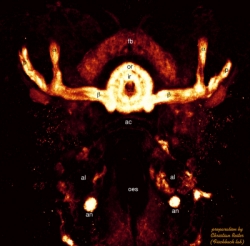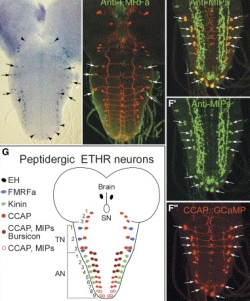 Violence and criminal behaviour is today thought to involve a series of complex interactions between heritable and environmental factors. Centuries of debate of the relative contribution of nature and nurture have not reached anything resembling a solution, and even today we can find ardent proponents and defenders of each extreme view (see Steven Pinker on this, PDF).
Violence and criminal behaviour is today thought to involve a series of complex interactions between heritable and environmental factors. Centuries of debate of the relative contribution of nature and nurture have not reached anything resembling a solution, and even today we can find ardent proponents and defenders of each extreme view (see Steven Pinker on this, PDF).
While violence and crime has been part of all recorded history, the society’s understanding of the underlying causes of these acts and how they should be dealt with have changed over time. In modern times, we also see a wide variety of legal practices in dealing with criminals and violators: from the death penalties and multiple life sentences in the US, Russia and other countries, to briefer treatment sentences in Europe. These different societal solutions build – explicitly or implicitly – upon what causes violence and criminal acts, and how they should, if at all possible, be treated.
It would be no understatement to claim that the biological explanation of violence and crime has not been fully implemented (nor understood) by law makers or enforcers. Just as you could say about the society in general: aside from specific demonstrations of how violent offenders have larger or smaller neural damage, little is known about the biological properties of violence. Not that the literature has been flourishing with articles demonstrating such relationships. It hasn’t. Until now, where recent studies report detailed analyses of how genes and environments alter the brain’s workings to make people more or less prone to violence, impulsive acts and criminal behaviour.
In a most interesting paper (PDF) published in PNAS, a team of researchers from Austria, Italy and USA headed by Andreas Meyer-Lindenberg have uncovered neurobiological factors that contribute significantly to violence in humans. The team studied the normal allelic variation in the X-linked monoamine oxidase A (MAOA) gene, a gene that has also been shown to be associated with impulsive aggression in humans and animals.
In the study both structural and functional MRI methods were applied. First, the researchers asked whether the low expression variant of MAOA, known to be associated with increased risk of violent behaviour, would predict differences in the size of limbic structures such as the amygdala. Indeed, what they found was that the low expression MAOA predicted limic reductions, as can be shown from the figure article

Structural reductions in limbic and paralimbic regions due to genotype. The size of both the amygdala and cingulate cortex are predicted by benotype. The low expression MAOA have significantly reduced volumes of these structures, compared to the high expression MAOA group.
Second, the team studied how these structures worked using two fMRI paradigms. The first task was a facial expression matching task, a task known to involve the amygdalae. The amygdala activation was significantly influenced by genotype: the low MAOA group displayed higher amygdala activation and at the same time lower activation in cingulate cortex subregions, as well as left orbitofrontal cortex and left insular cortex – all brain regions implied in emotion processing.

Regions involved in facial expression matching (click image for larger version). As you can see from the graphs, there is a genotype-by-gender interaction.
The second task was an emotion memory task, where subjects were asked to encode and recall aversive (compared to neutral) valenced information. Here, the results pointed to a significant genotype-by-gender interaction effect, in that men with a low MAOA version showed increased reactivity of the left amygdala and hippocampus during recall. No such relationship was found for women.
Interestingly, the researchers also found a tight relationship between gender and genotype during the first volumetric study. Here, low-MAOA males showed increased orbitofrontal volume bilaterally, while no such relationship was found in females. In this sense, the MAOA allelic variances seem to influence males most.
Finally, Meyer-Lindenberg and his co-workers draw the lines to other studies relating MAOA variance to a highened sensitivity in low-MAOA males to aversive events (e.g. abuse) during childhood. The combination of a low-MAOA genotype with such events seem to produce abnormal regulation (through the cingulate) of the amygdala and an increased predisposition to impulsivity and violence. As the authors note:
Predisposition to impulsive violence by means of abnormal activation and regulation of emotion-related amygdala function might be further enhanced by deficient neural systems for cognitive control, especially over inhibition, the capacity to suppress prepotent but inappropriate behavior that might originate from a dysregulated affective response. Although the rostral cingulate is key to the regulation of acute affective arousal and emotional learning, inhibitory control of prepotent cognitive responses is thought to be critically dependent on caudal aspects of anterior cingulate. Our study of genetic influences on cognitive impulse control revealed a sex-dependent impairment in precisely this area of cingulate, affecting men only. Our finding of a genotype-by-sex interaction in this region therefore provides a plausible neural mechanism for reduced cognitive inhibitory control in risk allele-carrying males, suggesting synergistic impairment in cognitive and emotional neural regulatory mechanisms that might render MAOA-L men at especially high risk for a neural phenotype that plausibly relates to the slightly greater probability of impulsive violence.
Endnote: it might be useful to note that this study was conducted on healthy, non-criminal volunteers. The obvious step next is to study crime offenders (different types) and the complex interplay between genes, gender and childhood events.
-Thomas
Read Full Post »



 In relation to our previous and well-visited
In relation to our previous and well-visited 
 The next
The next  What is the nature of instincts and inborn behaviour? The cover article of this week’s issue of
What is the nature of instincts and inborn behaviour? The cover article of this week’s issue of  Violence and criminal behaviour is today thought to involve a series of complex interactions between heritable and environmental factors. Centuries of debate of the relative contribution of nature and nurture have not reached anything resembling a solution, and even today we can find ardent proponents and defenders of each extreme view (see
Violence and criminal behaviour is today thought to involve a series of complex interactions between heritable and environmental factors. Centuries of debate of the relative contribution of nature and nurture have not reached anything resembling a solution, and even today we can find ardent proponents and defenders of each extreme view (see 

 The main excitatory neurotransmitter in the central nervous system in mammals is
The main excitatory neurotransmitter in the central nervous system in mammals is 